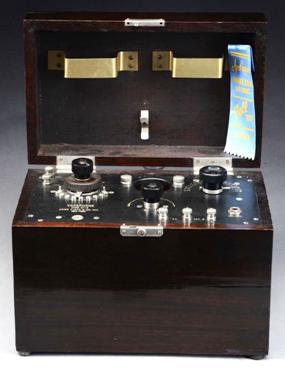Outcomes and Aftermath
Tex Rickard got all the fame and fortune he wanted. Among the tens of thousands who sat in the Octagon to witness his Fight of the Century were John D. Rockefeller, Henry Ford, George M. Cohan, Al Jolson, Ring Lardner, Dorothy Parker, and H. L. Mencken. The old record "gate" for a prize fight had been substantially less than $1,000,000; the gate for this fight was an astounding $1,789,000. Rickard was said to have personally netted more than $1,000,000.
The one-time small town marshal would never get his national chain of boxing arenas, although his Boston Garden did open in 1928. Early in 1929, while on a business trip to Miami, he underwent emergency surgery for appendicitis. He died of post-surgery complications.
*
The Orchid Man did not unseat the World Champion. In the second round, he hit Dempsey hard but awkwardly, and broke his own wrist. He continued to fight, but he was increasingly hampered by the injury, so that by the fourth round, his ability to attack his opponent and defend himself had diminished critically. He was knocked down by a flurry of powerful punches. While Dempsey stood aside, Carpentier struggled to get up, finally standing up at the count of nine. The referee permitted the fight to resume; Dempsey quickly stepped in and mercifully delivered a single half-hearted body punch that floored the challenger. The fight was over. The champion bent over his foe, helping him up. He half-carried him to the correct corner, and remained at his side until Carpentier's head was clear, and he could respond coherently to Dempsey's questions. The contest ended with compassion and respect, not gloating.
The two men would remain long-distance friends for life, exchanging Christmas cards, sometimes writing letters, now and then enjoying time together when they got together for special events related to boxing.
*
The fight broadcast's impact on the story of commercial radio is difficult to assess. Change would have happened someday, even without it, but the broadcast likely hastened the widespread public embrace of radio.
First, it certainly made more Americans aware of radio's "coming of age," and of what it could offer. Rickard's tying radio to his "biggest ever" event meant that scores of millions of people learned that there had been a broadcast of the fight, had got some idea of what the broadcast was like, and also had read positive feedback about what listeners thought. Americans en masse began to understand why they would want radios in their homes.
Second, businesses and investors who had been waiting on the sidelines realized how close they were to a new, profitable world, and money began to flow. People soon were investing more in radio stations, and in companies that made radio equipment. Business in general realized that radio advertising would be practical. The public was confident that there would be more broadcasts on more stations, and it was willing to buy receivers in anticipation of that day.
In any event, commercial radio's impasse crumbled quickly. The number of new FCC-licensed radio stations began to increase, especially in the Northeast. Equipment development and production accelerated. "Radio sets" - with speakers, not headphones - began to appear in stores, and people bought them. The time had come.

Early ad for off-the-shelf radio receiver
Huntington Long-Islander, October 20, 1922

1922 Vocaphone receiver (restored)
Dan Morphy Auctions
***

